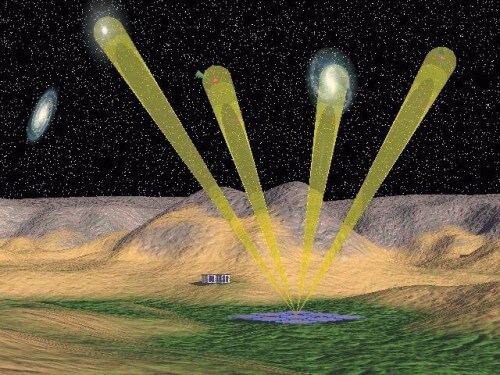When SKA is completed it will collect data in a volume 10 times the global volume of data passing through the Internet. Processing this data presents an extremely ambitious challenge in the field of big data and will lead to the development of new advanced computing technologies to tackle this challenge

South Africa joins the research laboratories of IBM in Zurich and the researchers of the Netherlands Institute for Radio Astronomy (ASTRON) in the project to build the radio telescope Square Kilometer Array - (SKA). SKA was born as part of an international consortium to build the largest and most sensitive radio telescope in the world, which will help in the study of the origins of the universe. Last year, ASTRON and IBM launched a 5-year venture, named DOME, to develop the information technology roadmap for the SKA. Now the National Research Institute in South Africa joins this project.
When SKA is completed it will collect data in a volume 10 times the global volume of data passing through the Internet. Processing this data presents an extremely ambitious challenge in the field of big data and will lead to the development of new advanced computing technologies to tackle this challenge. The impact of these developments will be felt beyond the project itself and will help progress to the new era of computing, which BAM calls cognitive computing.
Some of the radio signals that will be picked up by the telescope and processed by IBM systems were created during the Big Bang, which created the universe more than 13 billion years ago - and have been moving through space ever since. Astronomers estimate that analyzing these signals will make it possible to crack the mysteries of dark matter and trace the origin of the universe.
The South African activity within the project will be conducted within a special unit established at the National Research Institute in South Africa. As part of the partnership in the project, the South African researchers will engage in the development of signal processing tools and advanced algorithms for receiving, processing and analyzing data received from the radio telescope, in a way to present clearer images that will be used for astronomical studies.
The team in South Africa will also work on hardening the unique chip arrays designed to operate within the radio telescope. The IBM research team is already conducting first experiments in prototypes of a new architecture for microservers, based on the union of a large number of chips in a three-dimensional array cooled by liquid.
The 64 receiving plates of the MeerKat telescope, which is already operating in South Africa, will be used in the development and testing tasks of advanced software, in a way that helps to plan the structure of the computing system in the new project, and makes it possible to optimize the future processing tasks and save expenses.
